Cause of death Septicaemia | Role Zookeeper | |
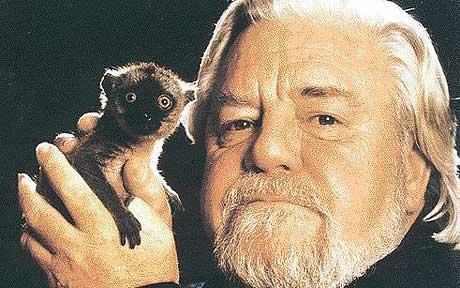 | ||
Movies and TV shows Books My Family and Other Animals, Birds - Beasts - and Relat, The Corfu Trilogy, A Zoo in My Luggage, The Garden of the Gods Similar People Lee McGeorge Durrell, Lawrence Durrell, Margaret Durrell, Giorgos Seferis, Imelda Staunton | ||
Gerald durrell
Gerald Malcolm Durrell, OBE (7 January 1925 – 30 January 1995) was a British naturalist, zookeeper, conservationist, author and television presenter. He founded what are now called the Durrell Wildlife Conservation Trust and the Durrell Wildlife Park on the Channel Island of Jersey in 1959. He wrote a number of books based on his life as an animal collector and enthusiast. He was the youngest brother of novelist Lawrence Durrell.
Contents
- Gerald durrell
- My family and other animals by gerald durrell
- Early life and education
- Corfu
- London and Whipsnade Zoo
- Early animal expeditions
- Foundations for the Jersey Zoo
- The Zoo and the Trust
- Later life and death
- Policy for zoos
- Books
- Illustrators
- Honours and legacy
- Species and homages
- Featuring the subject
- On the subject
- Movies
- Screenplays
- Limericks
- Time capsule
- References
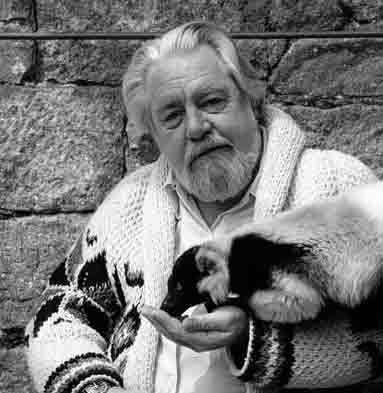
My family and other animals by gerald durrell
Early life and education
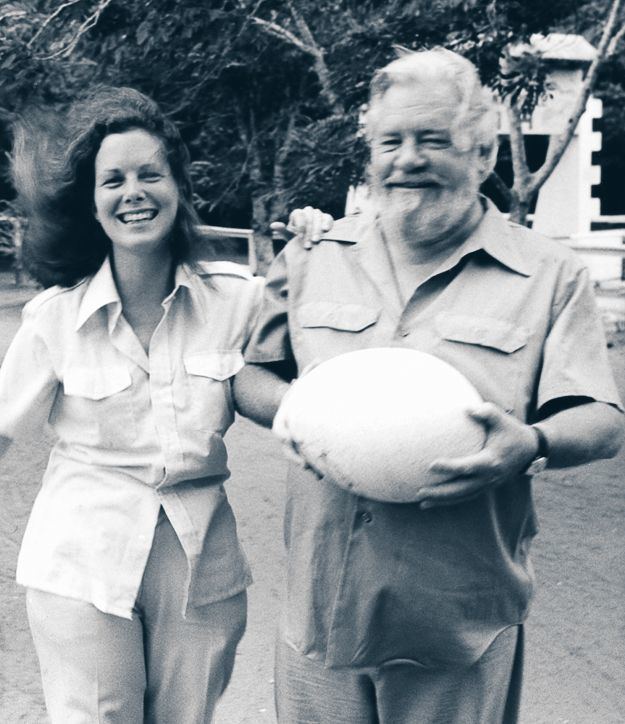
Durrell was born in Jamshedpur, India on 7 January 1925. He was the fourth and final child of Louisa Florence Dixie and Lawrence Samuel Durrell, both of whom were born in India of English and Irish descent. Durrell's father was a British engineer and, as was commonplace and befitting the family status, the infant Durrell spent most of his time in the company of an ayah (nursemaid). Durrell reportedly recalled his first visit to a zoo in India and attributed his lifelong love of animals to that encounter.
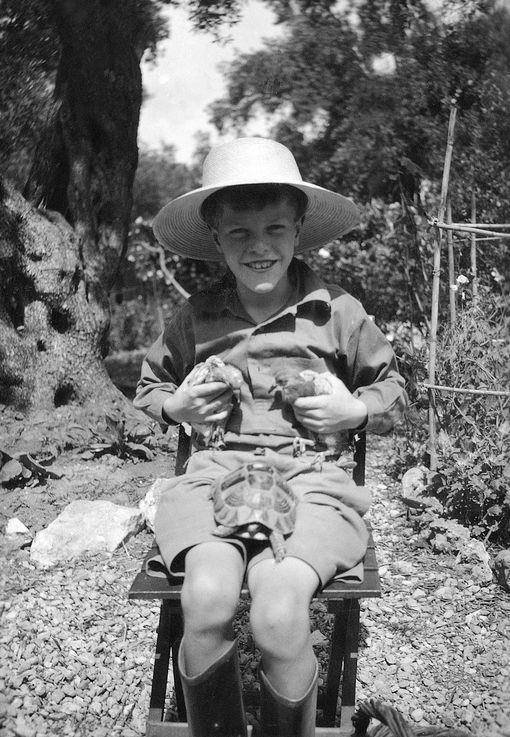
The family moved to Britain shortly before the death of his father in 1928 and settled in the Upper Norwood, Crystal Palace area of South London. Durrell was enrolled in Wickwood School, but frequently stayed at home feigning illness.
Corfu
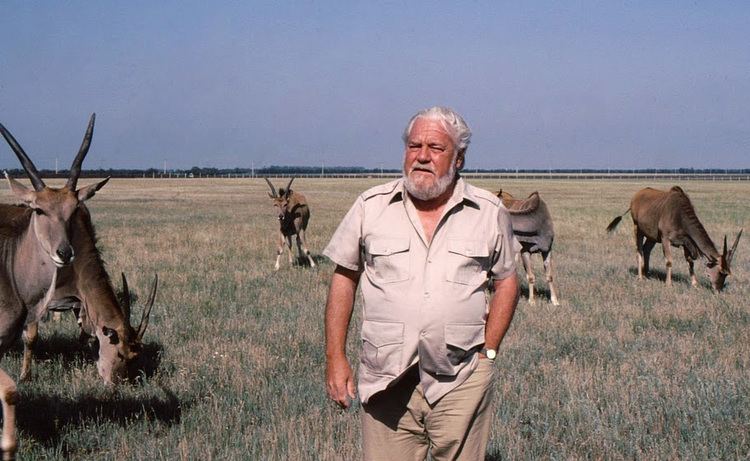
Mrs. Durrell moved with her three younger children (Leslie, Margaret and Gerald) to the Greek island of Corfu in 1935, joining her eldest son, Lawrence, who was living there with his wife. It was on Corfu that Durrell began to collect and keep the local fauna as pets.
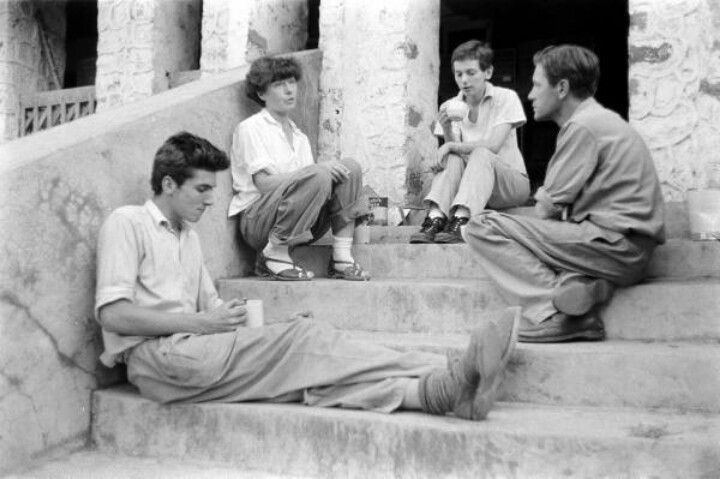
The family lived on Corfu until 1939. This interval was later the basis of the book My Family and Other Animals and its successors, Birds, Beasts, and Relatives and The Garden of the Gods, plus a few short stories such as "My Donkey Sally". Durrell was home-schooled during this time by various family friends and private tutors, mostly friends of his eldest brother Lawrence (later to become a successful novelist).
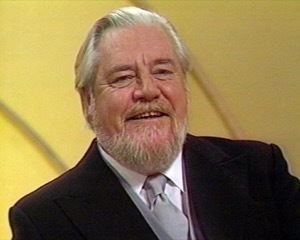
Theodore Stephanides, a Greek doctor, scientist, poet, philosopher and a friend of one of Durrell's tutors, became Durrell's greatest friend and mentor, his ideas leaving a lasting impression on the young naturalist. Together, they examined Corfu's fauna, which Durrell housed in a variety of items including test tubes and bathtubs. Stephanides' daughter, Alexia Mercouri (born 1927), accompanied the two on their field trips. She is currently (April 2017) the only living witness of that period and has claimed that both families hoped she and Gerry would marry one day, but that any such prospect was disrupted by the outbreak of war in 1939. Another major influence during these formative years, according to Durrell, was the writing of French naturalist Jean Henri Fabre.
London and Whipsnade Zoo
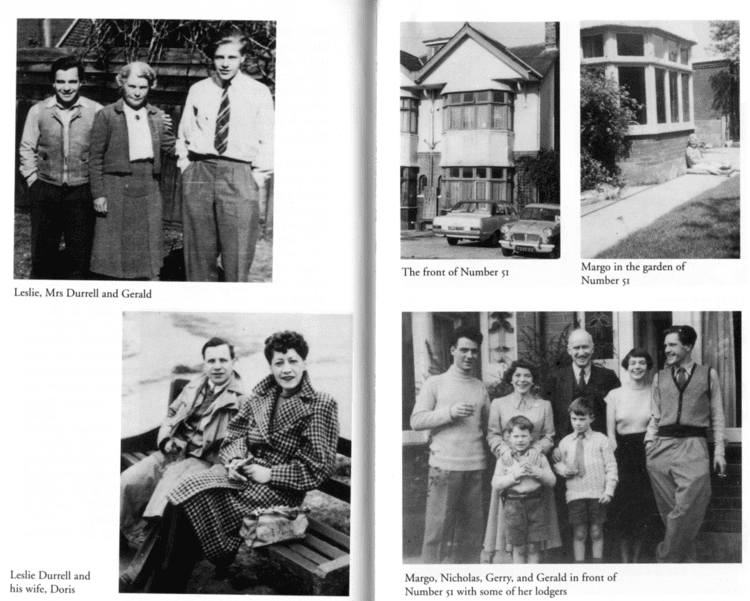
Gerald, his mother, his brother Leslie and their Greek maid Maria Kondos moved back to Britain in 1939 at the outbreak of the Second World War. It was difficult to find a job in the war and post-war years, especially for a home-schooled youth, but the enterprising Durrell worked as a helper at an aquarium and pet store. Some of the difficulties that he faced in this period can be found in Fillets of Plaice.
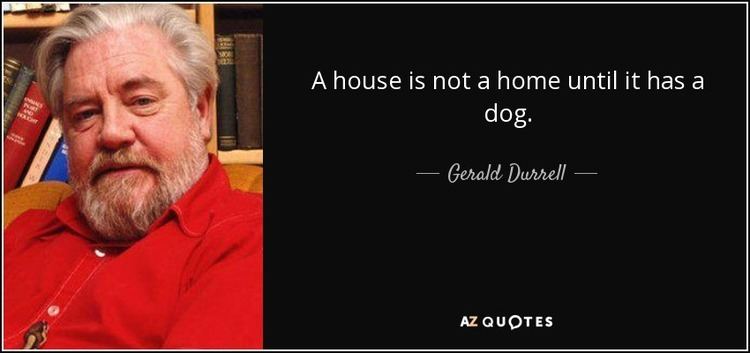
His call-up for the war came in 1943, but he was exempted from military duty on medical grounds, and asked to serve the war effort by working on a farm. After the war, Durrell joined Whipsnade Zoo as a junior or student keeper. This move fulfilled a lifelong dream: Durrell claims in The Stationary Ark that the first word that he could enunciate with any clarity was "zoo". Beasts in My Belfry recalls events of this period.
Early animal expeditions
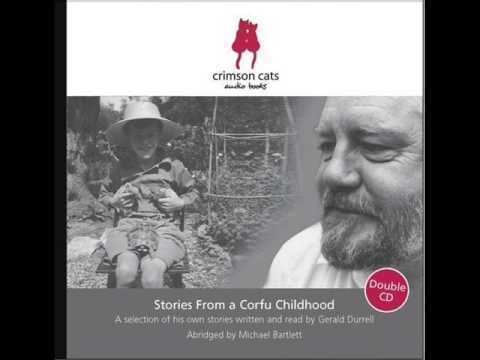
Durrell left Whipsnade Zoo in May 1946 in order to join wildlife collecting expeditions of the time, but was denied a place in the voyages due to his lack of experience. Durrell's wildlife expeditions began with a 1947 trip to the British Cameroons (now part of Cameroon) with ornithologist John Yealland, financed by a £3,000 inheritance from his father on the occasion of his turning 21. The animals he brought back were sold to London Zoo, Chester Zoo, Paignton Zoo, Bristol Zoo and Belle Vue Zoo (Manchester). He continued such excursions for many decades, during which time he became famous for his work for wildlife conservation.
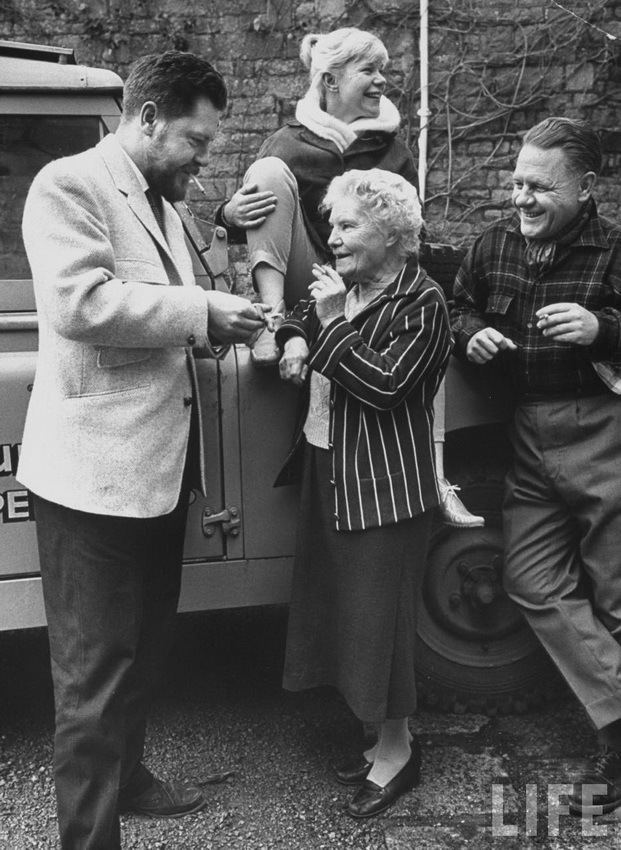
He followed this successful expedition with two others, accompanied by fellow Whipsnade zookeeper Ken Smith: a repeat trip to the British Cameroon, and to British Guiana (now Guyana) in 1949 and 1950 respectively. On the first of these trips, he met and befriended the shrewd and colourful Fon of Bafut Achirimbi II, an autocratic West African chieftain, who would help him organise future missions.
Because of his dedication, Durrell housed and fed his captives with the best supplies obtainable, never over-collecting specimens, never trapping animals having merely "show value", or those which would fetch high prices from collectors. These practices differed from those of other animal-collecting expeditions of the time and, as a result, Durrell was broke by the end of his third expedition. Further, due to a falling-out with George Cansdale, superintendent of the London Zoo, Durrell was blackballed by the British zoo community and could not secure a job in most zoos, ultimately securing a job at the aquarium at Belle Vue Zoo in Manchester where he remained for some time.
On 26 February 1951, after an extended courtship, Durrell married Manchester resident Jacqueline ('Jacquie') Sonia Wolfenden — they eloped, because of opposition from her father. The couple initially lived in a small bedsitter in Durrell's sister Margaret's Bournemouth boarding house. Jacquie accompanied Durrell on most of his following animal expeditions and helped found and manage the Jersey Zoo. She also authored two humorous, best-selling memoirs on the lines of Durrell's books, to raise money for conservation efforts.
With encouragement and assistance from Jacquie, and advice from elder brother Lawrence, Gerald Durrell started writing humorous autobiographical accounts to raise money, initially because he and Jacquie were broke after their wedding and Durrell didn't have a source of income and then later to fund his expeditions and conservation efforts. His first book — The Overloaded Ark — was a huge success, causing Durrell to follow up with other such accounts. While Durrell only made £50 from British rights (Faber and Faber), he obtained £500 from the United States rights (Viking Press) for the book, and thus managed to raise money for a fourth expedition to South America in 1954. This, however, was undertaken during a political coup d'etat in Paraguay and was unsuccessful.
Foundations for the Jersey Zoo
The publication of My Family and Other Animals in 1956 made Durrell a notable author and brought him public recognition as a naturalist. Royalties from this book, which made best-seller lists in the United Kingdom, helped to fund Durrell's next expedition.
Durrell's growing disillusionment with the way zoos of the time were run, and his belief that they should primarily act as reserves and regenerators of endangered species, made him contemplate founding his own zoo. His 1957 trip to Cameroon for the third and last time was primarily to collect animals which would form the core collection of his own zoo.
This expedition was also filmed, it being Durrell's first experiment with making a cinematographic record of his work with animals. The success of the film To Bafut with Beagles, together with his autobiographical radio programme Encounters with Animals, made Durrell a regular with the BBC Natural History unit for decades to come, as well as generating funds for his conservation projects.
On his return from Bafut, Durrell and wife Jacquie stayed with his sister Margaret at her boarding house in the seaside resort of Bournemouth. His animals were housed in her gardens and garage on a temporary basis, while Durrell sought prospective sites for a zoo. To his dismay, both Bournemouth and Poole municipalities turned down his suggestion for a zoo. This experience provided material for his book A Zoo in My Luggage.
The Zoo and the Trust
Durrell founded the Jersey Zoological Park (now Durrell Wildlife Park) in 1959 to house his growing collection of animals. The site for the zoo, a 17th-century manor house, Les Augres Manor, came to Durrell's notice by chance after a long and unsuccessful search for a suitable site. Durrell leased the manor and set up his zoo on the redesigned manor grounds. In the same year, Durrell undertook another, more successful expedition to South America to collect endangered species. The zoo was opened to the public in 1959 on 26 March.
As the zoo grew in size, so did the number of projects undertaken to save threatened wildlife in other parts of the world. Durrell was instrumental in founding the Jersey Wildlife Preservation Trust (now Durrell Wildlife Conservation Trust), on 6 July 1963 to cope with the increasingly difficult challenges of zoo, wildlife and habitat management.
The Trust opened an international wing, the Wildlife Preservation Trust International, in the United States in 1971, to aid international conservation efforts in a better fashion. That year, the Trust bought out Les Augres Manor from its owner, Major Hugh Fraser, giving the zoo a permanent home.
Durrell's initiative caused the Fauna and Flora Preservation Society to start the World Conference on Breeding Endangered Species in Captivity as an Aid to their Survival in 1972 at Jersey, today one of the most prestigious conferences in the field. 1972 also saw Princess Anne becoming a patron of the Trust, an action which brought the Trust into media limelight, and helped raise funds.
The 1970s saw Jersey Wildlife Preservation Trust become a leading zoo in the field of captive breeding, championing the cause among species like the lowland gorilla, and various Mauritian fauna. Durrell visited Mauritius several times and coordinated large scale conservation efforts in Mauritius with conservationist Carl Jones, involving captive breeding programmes for native birds and reptiles, ecological recovery of Round Island, training local staff, and setting up local conservation facilities. This ultimately led to the founding of the Mauritian Wildlife Foundation in 1984.
Jacquie Durrell separated from and then divorced Gerald Durrell in 1979, citing his increasing work pressure, associated alcoholism and mounting stress as causes.
Durrell met his second wife Lee McGeorge Durrell in 1977 when he lectured at Duke University, where she was studying for a PhD in animal communication. They married in 1979. She co-authored a number of books with him, including The Amateur Naturalist, and became the Honorary Director of the Trust after his death.
In 1978 Durrell started the training centre for conservationists at the zoo, or the "mini-university" in his words. As of 2005, over a thousand biologists, naturalists, zoo veterinarians and zoo architects from 104 countries have attended the International Training Centre. Durrell was also instrumental in forming the Captive Breeding Specialist Group of the World Conservation Union in 1982.
Durrell founded Wildlife Preservation Trust Canada, now Wildlife Preservation Canada, in 1985. The official appeal Saving Animals from Extinction was launched in 1991, at a time when British zoos were not faring well and London Zoo was in danger of closing down.
In 1989, Durrell and his wife Lee, along with David Attenborough and cricketer David Gower helped launch the World Land Trust (then the World Wide Land Conservation Trust). The initial goal of the trust was to purchase rainforest land in Belize as part of the Programme for Belize. Around this time Gerald Durrell developed a friendship with Charles Rycroft, who became an important donor of funds both for building works in Jersey (the Harcroft Lecture Theatre) and for conservation work in East Africa, Madagascar and elsewhere.
1990 saw the Trust establish a conservation programme in Madagascar along the lines of the Mauritius programme. Durrell visited Madagascar in 1990 to start captive breeding of a number of endemic species like the aye aye.
Durrell chose the dodo, the flightless bird of Mauritius that was hunted to extinction in the 17th century, as the logo for both the Jersey Zoo and the Trust. The children's chapter of the trust is called the Dodo Club. Following his death, the Jersey Wildlife Preservation Trust was renamed Durrell Wildlife Conservation Trust at the 40th anniversary of the zoo on 26 March 1999. The Wildlife Preservation Trust International also changed its name to Wildlife Trust in 2000, and adopted the logo of the black tamarin.
To me, the (destruction) of an animal species is a criminal offence, in the same way as the destruction of anything we cannot recreate or replace, such as a Rembrandt [a famous painting] or the Acropolis (in Athens). (A Zoo in my Luggage)
Later life and death
A hard, outdoor life led Durrell to health problems in the 1980s. He underwent hip-replacement surgery in a bid to counter arthritis, but he also suffered from alcohol-related liver problems. His health deteriorated rapidly after the 1990 Madagascar trip. Durrell had a liver transplant in King's College Hospital on 28 March 1994, and he died of septicaemia on 30 January 1995, shortly after his 70th birthday in Jersey General Hospital. His ashes are buried in Jersey Zoo, under a memorial plaque bearing a quote by William Beebe.
The beauty and genius of a work of art may be re-conceived, though its first material expression be destroyed; a vanished harmony may yet again inspire the composer; but when the last individual of a race of living beings breathes no more, another heaven and another earth must pass before such a one can be again. (The Bird, 1906)
A memorial celebrating Durrell's life and work was held at the Natural History Museum in London on 28 June 1995. Participants included personal friends such as David Attenborough and Princess Anne.
Policy for zoos
Gerald Durrell was ahead of his time when he postulated the role that a 20th-century zoo should play, primarily in Stationary Ark. His idea relies on the following bases:
Durrell's ideas about housing zoo animals also bring his priorities to the fore. The bases on which enclosures at Jersey are built:
Durrell Wildlife Park was the first zoo to house only endangered breeding species, and has been one of the pioneers in the field of captive breeding. The International Training Centre, and the organisation of the conference on captive breeding are also notable firsts.
Durrell initially faced stiff opposition and criticism from some members of the zoo community when he introduced the idea of captive breeding, and was only vindicated after successfully breeding a wide range of species. One of the most active opposition members was George Cansdale, superintendent of the London Zoo and Zoological Society of London, and wielder of considerable influence in the zoo community.
Books
Durrell's books, both fiction and non-fiction, have a wry, loose style that pokes fun at himself as well as those around him. Perhaps his best-known work is My Family and Other Animals (1956), which tells of his idyllic, if oddball, childhood on Corfu. Later made into a TV series, it is delightfully deprecating about the whole family, especially elder brother Lawrence, who became a famous novelist. Despite Durrell's jokes at the expense of "brother Larry", the two were close friends all their lives.
Gerald Durrell always insisted that he wrote for royalties to help the cause of environmental stewardship, not out of an inherent love for writing. Gerald Durrell describes himself as a writer in comparison to his brother Lawrence:
The subtle difference between us is that he loves writing and I don't. To me it's simply a way to make money which enables me to do my animal work, nothing more.
However, he shows a surprising diversity and dexterity in a wide variety of writing, including:
Durrell was also a regular contributor to magazines on both sides of the Atlantic, like Harper's, Atlantic Monthly, and the Sunday Times Supplement. He was also a regular book reviewer for the New York Times. A number of excerpts and stories from his books were used by Octopus Books and Reader's Digest Publishing, including in the Reader's Digest Condensed Books.
Durrell's works have been translated into 31 languages and made into TV serials and feature films. He has large followings in Northern and Eastern Europe, Russia, Israel and in various Commonwealth countries, including India.
The British Library houses a collection of Durrell's books, presented by him to Alan G. Thomas, as part of the Lawrence Durrell Collection.
Illustrators
Durrell was a talented artist and caricaturist, but worked with numerous illustrators over the years, starting with Sabine Baur for The Overloaded Ark (published by Faber and Faber). Two of his most productive collaborations were with Ralph Thompson (Bafut Beagles, Three Singles To Adventure, The New Noah, The Drunken Forest, Encounters with Animals, A Zoo in My Luggage, The Whispering Land, Menagerie Manor) (published by Rupert Hart-Davis) and Edward Mortelmans (Catch Me A Colobus, Beasts in My Belfry, Golden Bats and Pink Pigeons) (published by Collins). The illustrations are mostly sketches of animal subjects. Ralph Thompson visited the Jersey Zoological Park during the sketching period for Menagerie Manor.
Other illustrators who worked with Durrell were Barry L. Driscoll, who illustrated Two in the Bush; Pat Marriott, who illustrated Look at Zoos; and Anne Mieke van Ogtrop, who illustrated The Talking Parcel and Donkey Rustlers.
Durrell wrote a number of lavishly illustrated children's books in his later years. Graham Percy was the illustrator for The Fantastic Flying Journey and The Fantastic Dinosaur Adventure. Toby the Tortoise and Keeper were illustrated by Keith West. His Puppy board books were illustrated by Cliff Wright.
Honours and legacy
Species and homages
Featuring the subject
On the subject
Movies
Screenplays
Limericks
Durrell quoted numerous bawdy limericks in his Corfu Trilogy which have not been documented elsewhere, and it is probable that some of these owe their origins to Lawrence Durrell, Edward Lear and Theodore Stephanides. Gerald Durrell is himself the subject of a few limericks written later.
Time capsule
A time capsule buried at Jersey Zoo in 1988 contains the following popular quote by Durrell, often used in conservation awareness campaigns:
